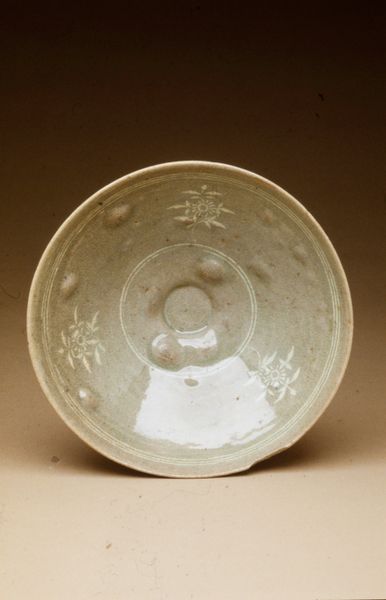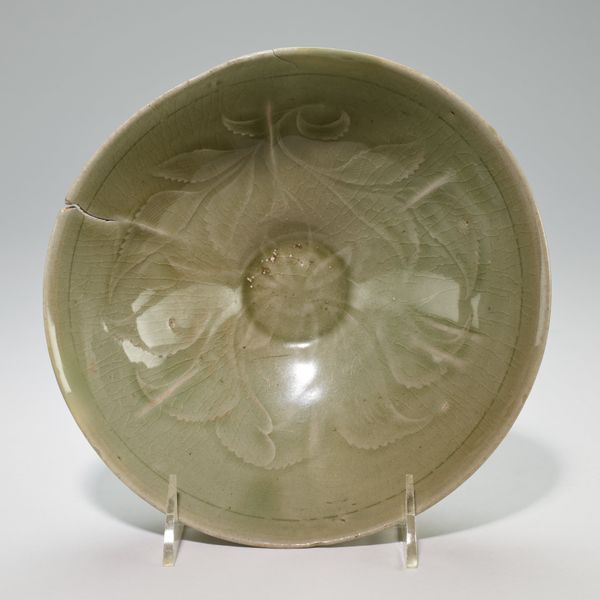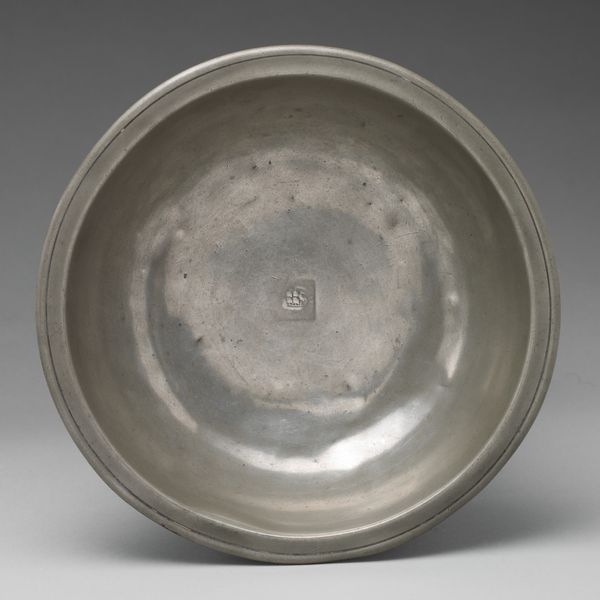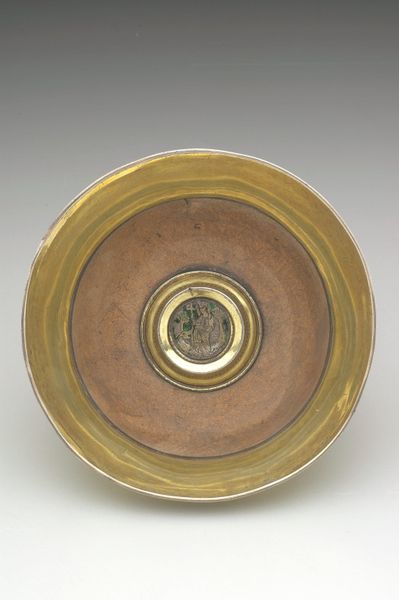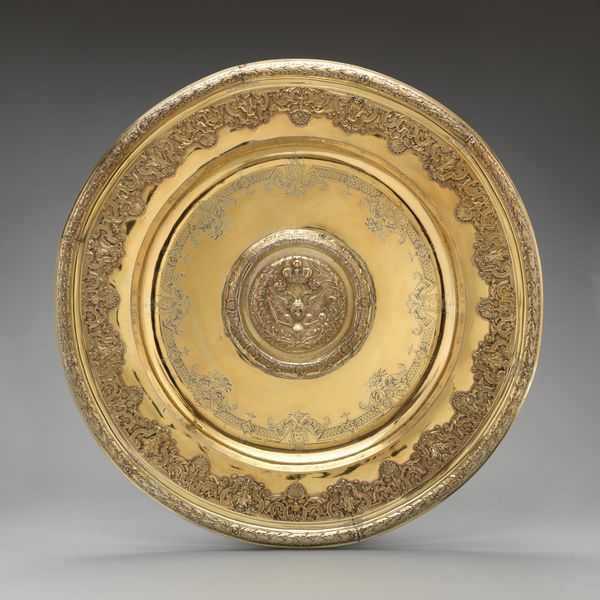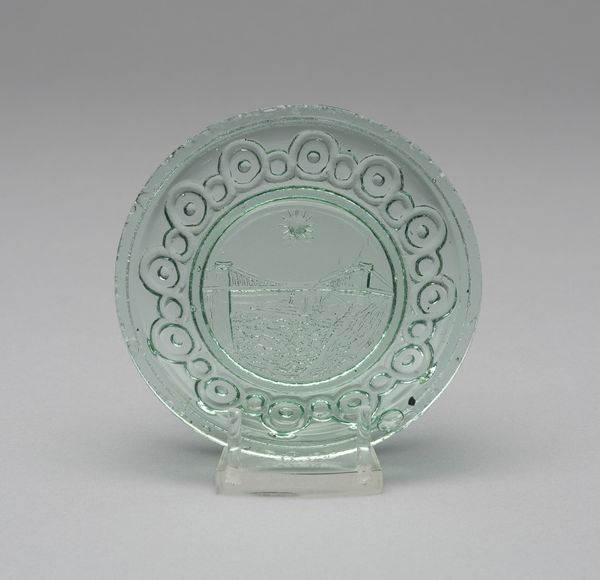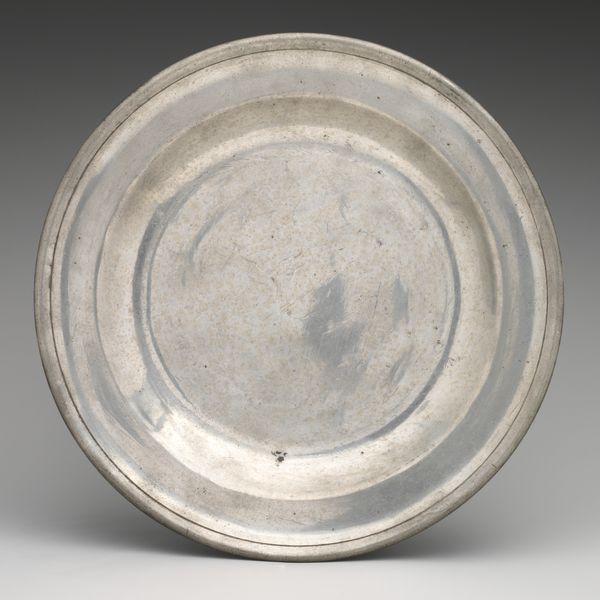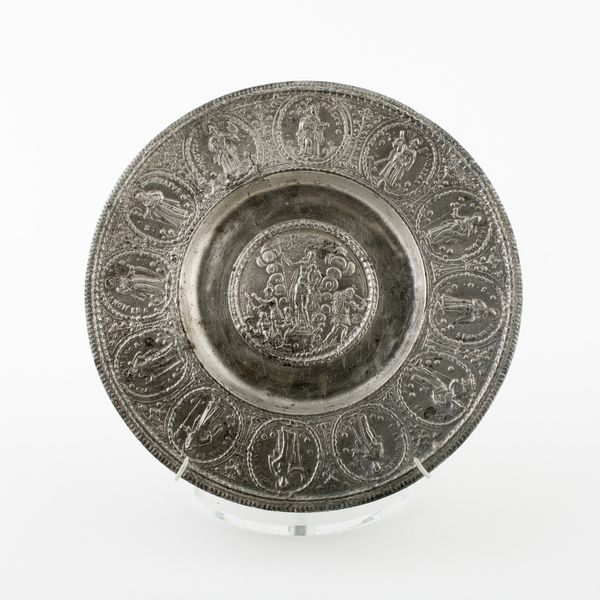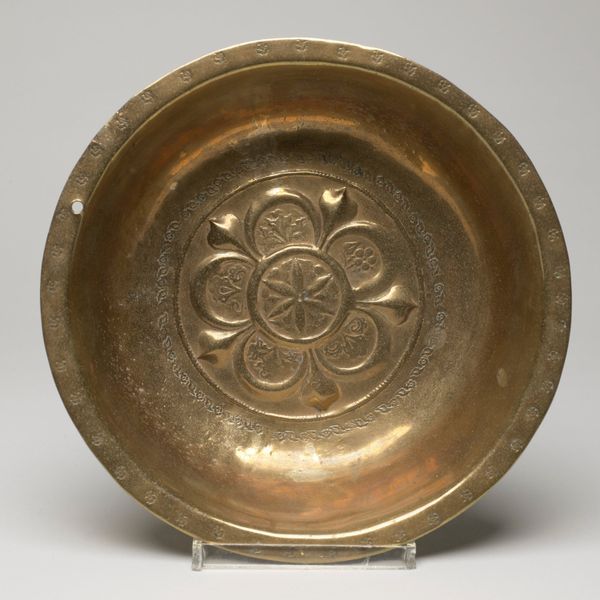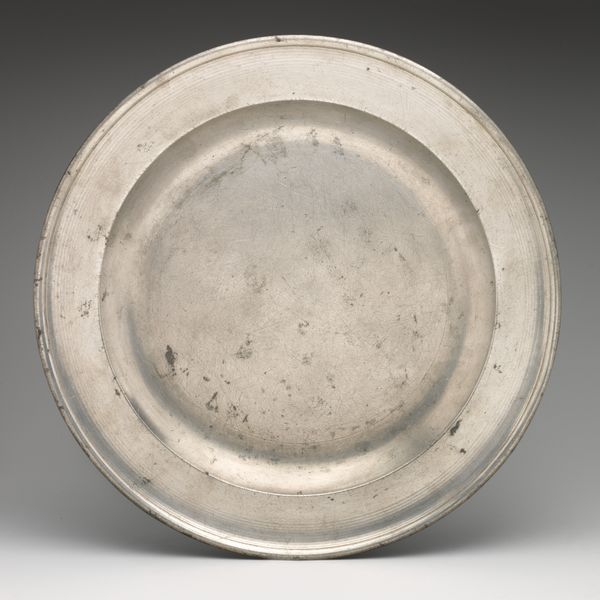
ceramic
#
medieval
#
asian-art
#
ceramic
#
form
#
islamic-art
#
decorative-art
Dimensions: 2 7/8 x 7 3/8 in. (7.3 x 18.73 cm)
Copyright: Public Domain
Editor: We're looking at an inlaid celadon bowl, likely from the 13th century. It's a ceramic piece currently housed in the Minneapolis Institute of Art. It feels very delicate to me, but I am curious what it might have been like to hold. How do you interpret this bowl in the context of its time? Curator: That's a perceptive question. Beyond its delicate beauty, this bowl speaks volumes about the societal structures of the Goryeo Dynasty. Celadon ware like this was highly prized, not just for its craftsmanship, but as a symbol of elite status. Consider the resources—both human and material—required to create such an object. Does that influence how you see the imagery depicted inside the bowl? Editor: It does. I was so focused on its formal qualities, the curves and the subtle details, but you're right. Knowing it was a status symbol makes me think about the inequalities of the time. It must have been inaccessible to most people. Curator: Precisely. These objects were potent symbols of power and social division. Even the act of consuming food or drink from such a bowl became a performative act of privilege. Thinking about it in terms of power and performance, how might this object inform contemporary art practices around identity? Editor: I guess it shows how even everyday objects can be charged with political meaning, and how artists today can use similar strategies to comment on our own social hierarchies. This makes me question whether a humble utilitarian object can be elevated to a representation of cultural meaning and identity. Curator: Exactly! By understanding the bowl's historical and social context, we can see it not just as a beautiful object but as a window into a complex social world. Editor: I see the artwork in a new light now. Thanks so much.
Comments
No comments
Be the first to comment and join the conversation on the ultimate creative platform.
